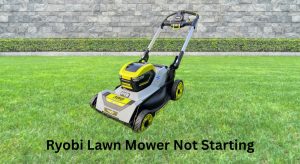You’re bracing against the icy wind, snow piling up by the minute, and your snow blower won’t start. That familiar pull of the starter cord meets only silence or a sputtering cough—no roaring engine to clear your driveway. When your snow blower won’t start, 90% of the time it’s caused by preventable fuel issues, safety switch errors, or simple ignition problems. Don’t resign yourself to hours with a shovel. This guide delivers immediate diagnostics and field-tested fixes you can complete before the snow reaches your doorstep. Within minutes, you’ll know exactly why your machine is refusing to fire up and how to get it running reliably.
Diagnose Fuel Failures Before Panicking

Stale gasoline is the silent killer of snow blower startups. When fuel sits in your tank all summer, it transforms into a gummy varnish that chokes critical carburetor passages. This residue blocks fuel flow to the combustion chamber, leaving your engine starved no matter how hard you pull the starter cord. If your snow blower won’t start after winter storage, assume bad fuel first—it’s responsible for most “mystery” breakdowns.
Spot Empty Tank or Bad Fuel Symptoms
- Starter cord pulls with zero resistance (like turning over an empty engine)
- Engine cranks repeatedly but never catches ignition
- Strong gasoline odor during starting attempts (sign of flooding)
- Visible fuel separation layers or dark amber/brown discoloration in the tank
Execute a 60-Second Fuel Quality Check
Shine a flashlight into your fuel tank. Fresh fuel should look like pale straw—crystal clear and bright. Old fuel turns murky brown with a sour chemical smell. If you see floating debris or distinct separation layers (ethanol-blended fuel pulling away from water), drain the entire system immediately. Never attempt to start with contaminated fuel—it forces gunk deeper into the carburetor.
Verify Fuel Valve Position
Locate the fuel shutoff valve (typically near the tank base) and slide it firmly to “ON”. This tiny lever often shifts during storage or transport, mimicking a dead engine. A single click confirms proper positioning—this oversight causes 20% of unnecessary service calls.
Bypass Safety Switch Sabotage
Your snow blower’s safety systems prevent operation when disengaged—but they also fail silently, blocking startup when you least expect it. A misplaced safety switch is the #2 reason your snow blower won’t start when temperatures drop below freezing.
Test the Ignition Key Connection
Remove and firmly reinsert the key. A loose connection breaks the electrical circuit, acting like a dead battery. Wiggle the key gently—if you feel excessive play, debris may be jamming the switch. Clean the key slot with compressed air before retrying.
Confirm Red Safety Toggle Position
Find the red safety lever (usually near the handlebars) and ensure it’s snapped fully to “RUN”. This switch gets accidentally bumped during storage or when moving the machine. Listen for a distinct click when engaging it—no click means mechanical failure requiring replacement.
Master Cold-Start Sequencing
Flooding your engine with excess fuel causes more failed startups than any single component failure. Priming incorrectly when your snow blower won’t start wastes critical minutes and drowns the spark plug.
Follow the Exact Cold-Start Sequence
- Set choke to FULL (lever pulled all the way up)
- Position throttle at 3/4 speed (not idle)
- Prime ONLY 2 times if below 20°F (skip entirely above 32°F)
- Pull starter cord with firm, full strokes
Recover From Engine Flooding
If you’ve pulled the cord more than 5 times without success:
– Remove the spark plug
– Pull starter cord 5-6 times to clear excess fuel
– Clean plug electrode with wire brush or replace
– Wait 2 minutes before retrying with choke OFF
Clean Carburetor Without Full Removal
You don’t need to disassemble the entire carburetor for most starting failures. 75% of fuel delivery issues resolve with float bowl cleaning—a 10-minute fix requiring only basic tools.
Perform Emergency Bowl Cleaning
- Locate carburetor bowl (brass/aluminum dome under air filter)
- Place rag beneath to catch fuel drips
- Remove bowl bolt with 1/2″ wrench
- Spray carb cleaner into bowl cavity and center jet tube
- Reinstall bowl with new crush washer if available
Know When to Call for Backup
If the engine still won’t start after bowl cleaning, persistent clogs require full carburetor removal. Take photos during disassembly—especially noting needle valve turns for reassembly. If you’re uncomfortable with precision reassembly, professional service ($75-$125) beats costly guessing games.
Test Ignition System in 120 Seconds

No spark means no combustion—even with perfect fuel flow. Testing your snow blower won’t start ignition issues requires zero special tools and takes under two minutes.
Decode Spark Plug Clues
- Wet, black plug: Engine flooding (clean and reinstall)
- White/gray deposits: Lean fuel mixture (check air leaks)
- Cracked porcelain: Immediate replacement required
- Fouled electrodes: Clean with wire brush or replace
Conduct the Bare-Metal Spark Test
- Reconnect spark plug wire
- Hold plug base firmly against engine block
- Pull starter cord while watching electrode gap
- Look for bright blue spark jumping the gap
No spark? Replace the plug first ($5 fix). Still no spark? Your ignition coil needs professional testing—don’t waste time on parts substitutions.
Rescue Electric Start Failures

Electric starters fail differently than pull-cord systems. When your snow blower won’t start with electric assist, diagnose these unique failure points.
Battery-Powered Model Fixes
- Check charge indicator (below 12V = insufficient power)
- Scrub corroded terminals with wire brush and baking soda paste
- Test with jump pack—hold for 30 seconds before engaging starter
Corded Electric Start Solutions
- Verify outlet power with phone charger
- Use 12-gauge extension cord (minimum) for runs over 25 feet
- Press primer bulb 3 times before hitting the start button
Prevent Next Winter’s Starting Nightmare
Fixing your snow blower won’t start crisis costs 10x more than prevention. Implement these storage protocols before spring thaw.
Execute Perfect End-of-Season Shutdown
- Add fuel stabilizer to full tank ($5 bottle)
- Run engine 5 minutes to circulate treated fuel
- Drain carburetor bowl completely
- Change oil (acidic contaminants eat engine internals)
- Spray fogging oil through spark plug hole
Fuel Up Smart for Winter
Use 91-octane ethanol-free gasoline from powersports stations. Ethanol blends absorb moisture, causing phase separation that damages engines. The $2-3 premium per tank prevents $300+ repairs. If using ethanol fuel, add phase-separation inhibitors.
Critical Symptom Decoder
| Symptom | Likely Cause | Immediate Action |
|---|---|---|
| Starts then dies | Clogged carburetor | Clean float bowl |
| Starter cord won’t pull | Ice in auger housing | Thaw with heat gun |
| Black smoke on startup | Over-primed engine | Skip choke, pull 10x |
| Backfire through carb | Lean fuel mixture | Check air filter seal |
| Clicking but no turnover | Weak battery | Clean terminals, jump start |
When to Seek Professional Help
Stop DIY attempts immediately if:
– Carburetor cleaning fails after 2 attempts
– Ignition coil shows no spark after plug replacement
– Electric starter motor emits burning smell
– Internal grinding noises during cranking
– Fuel leaks from carburetor body
Cost reality check: Professional carburetor service ($75-$125) prevents $300+ engine rebuilds caused by prolonged neglect. Schedule spring maintenance when shops aren’t swamped—avoid winter emergency rates.
Bottom line: When your snow blower won’t start, attack these three culprits in order—fuel freshness, safety switches, then ignition spark. This sequence solves 9 out of 10 starting failures before you’ve finished your first cup of coffee. For the stubborn 10%, professional diagnosis beats costly parts replacements. Implement the ethanol-free fuel strategy and end-of-season shutdown ritual described here, and you’ll transform from snow-shoveling victim to driveway-clearing champion all winter long. Your reliable machine awaits—no shovel required.





